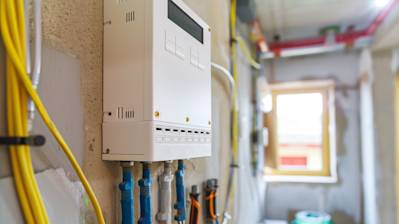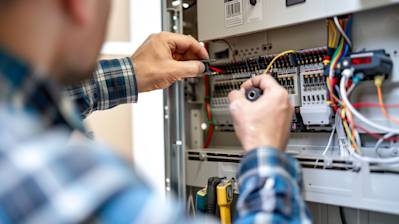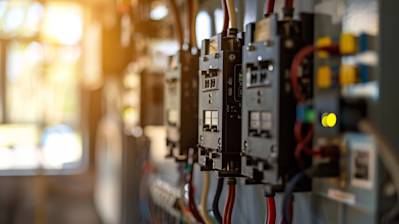When diagnosing issues within electrical circuits, an essential toolkit component is the circuit tracer. For electricians, mastering circuit tracers and understanding their operation is a prerequisite. Also known as signal tracers or cable tracers, these devices detect and trace electrical paths without the need for direct contact.
In this article, we provide you with an extensive overview of circuit tracers, unfolding their characteristics and uses to help you grasp a complete understanding of this remarkable tool.
What Is A Circuit Tracer?
Circuit tracers are electronic devices used to detect and trace wiring or cables within walls, floors, or conduit without physically interacting with the wires. These devices come in two parts – a transmitter and a receiver. The transmitter injects a signal into the circuit, which the receiver then picks up. This way, the circuit tracer can locate and track the electrical path.
The Functionality Of A Circuit Tracers
In essence, circuit tracers are sophisticated versions of continuity testers. Their delicate sensing and signal processing capacities allow them to capture the signal from the circuit, even through layers of insulation or concrete.
- The transmitter attaches to a circuit or wire and sends out a signal to the wire.
- The receiver is used to pick up this signal at a different point in the circuit, allowing electricians to follow the flow of the signal and thus trace the circuit.
Common Uses Of Circuit Tracers
Project planning in the domain of electronics can be streamlined significantly with a circuit tracer. Here are a few common applications of circuit tracers:
- Identifying Breaks: Circuit tracers can locate breaks in a wire or cable. This could be immensely helpful when trying to find a wiring problem within the walls of a house or beneath underground conduit.
- Finding Hidden Objects: When the wiring plan is missing or misplaced and the wire paths are unknown, a circuit tracer can map these hidden objects.
- Determining Circuit Paths: Tracing current pathways for home improvement or remodeling projects is another common use of a circuit tracer. This provides safety measures preventing power line damage, especially in DIY projects.
- Labeling and Sorting Circuits: Many buildings with intricate electrical systems have poorly labeled electrical panels. A circuit tracer can help sort circuits accurately and ensure every breaker has a proper label.
Types of Circuit Tracers
Circuit tracers vary in type depending on their usage, complexity, and sensitivity. Below we describe the two major types:
Low Voltage Circuit Tracers
Low voltage circuit tracers are designed for voltage ranging from 12V to 300V. These are typically used for tasks like:
- Tracing wiring in automotive applications
- Home electrical wiring
- Telecommunication line tracing
High Voltage Circuit Tracers
High voltage tracers handle circuits ranging from 300V up to several kilovolts. They’re primarily used in industrial settings or for outdoor electrical systems. They are perfect for:
- Troubleshooting electrical faults in power lines
- Locating underground cable routes
Tips to Using A Circuit Tracer Effectively
Here you will find a brief list of tips for using a circuit tracer effectively:
- Always connect the circuit tracer to a de-energized line.
- Avoid using on moist or wet surfaces to prevent false readings or sensor damage.
- Clear the area around the circuit to ensure accurate readings.
- Be cautious when tracing live circuits.
Frequently Asked Questions about Circuit Tracer
What Are the Best Circuit Tracers on the Market?
Most good quality circuit tracers have an LED display for signal strength, an adjustable sensitivity knob for better accuracy, and a loud speaker for signal strength. Some popular brands include Klein Tools, Fluke, Ideal and Extech. However, it's crucial to do your due diligence and select a model that meets your specific needs and budget.
Can a Circuit Tracer Be Used on a Live Circuit?
Many circuit tracers are designed to be used both on dead and live circuits (up to certain voltage limits). Be sure to check the specifications of the circuit tracer you are considering to ensure it can handle the voltage of the circuits you're working with, and always follow safety procedures.
How Can I Use a Circuit Tracer to Find Breaks or Shorts?
Using a circuit tracer to find breaks or shorts requires connecting the transmitter to one end of the circuit. You then sweep the receiver across the circuit in question. As the signal drops off, you have likely found your break or short.
Will a Circuit Tracer Work Through Walls?
Yes, a good circuit tracer should be able to detect a circuit's path through walls, floors, and ceilings. You should be able to find wires behind the drywall without any issues.
Are there Different Types of Circuit Tracers?
Yes, there are two types of circuit tracers: active and passive. Active tracers are used for locating and tracking wires that are hidden underground or behind walls. Passive tracers, on the other hand, are used for detecting live wires without needing to disconnect from the power source.
Does a Circuit Tracer Need Batteries?
Yes, both the transmitter and receiver of a circuit tracer usually require batteries for operation. Ensure you check the battery life of your circuit tracer regularly and replace the batteries as needed.
Can Circuit Tracers Get Damaged?
Like any other electrical equipment, circuit tracers can be susceptible to damages from misuse or accidents, such as being dropped or incorrectly stored. Therefore, it's essential to follow the manufacturer's guidelines on using and maintaining your tool.
Does a Circuit Tracer Have Different Ways of Indicating the Path of the Circuit?
Yes, most circuit tracers use a combination of audio and visual signals to indicate the path of the circuit. An LED light bar usually shows the strength of the signal, while an audio tone varies based on the signal strength as well. Some models may also vibrate for added feedback.
Can You Use a Circuit Tracer on Low Voltage Systems?
Yes, you can use a circuit tracer on low voltage systems. These include systems like your doorbell wiring, alarm systems, or speaker wires. However, always check the specifications and instructions of your specific circuit tracer model to avoid misuse.
Pros of Circuit Tracers
Easy to Use
One of the greatest advantages of circuit tracers is their simplicity and ease-of-use. Even if you are a novice in electrical applications, you will be able to use a circuit tracer effortlessly. These tools come with a straightforward design, which makes it easy for users to trace circuits without requiring any specialist knowledge or training.
Versatility
Circuit tracers are incredibly versatile tools. They can be used to trace wires behind walls, pinpointing breaks in wires or shorts, identifying specific circuits at the breaker, or even locating blown fuses. They're effective in residential, commercial, and industrial settings, making them an indispensable tool in the hands of electricians, plumbers, and DIY enthusiasts.
Precision
The accuracy that circuit tracers provide is one of their prime pros. The ability to distinguish between multiple wire paths in close proximity and only indicate the specific target line saves a lot of time and eliminates the trial and error you might encounter with other tools or methods. This precision helps to greatly reduce the risk of damage to circuits or equipment.
Safety
Using a circuit tracer is a non-invasive method, which means there's no need to cut walls or insulation to find a wire or a break. Plus, many models are designed with inbuilt safety features such as voltage protection and insulation piercing probes, providing protection against electrical shocks.
Time-Saving
Because circuit tracers have high precision and ease of use, they are great time-saving tools, particularly for professional electricians. What might have taken hours of manual searching or guesswork can be accomplished within minutes using a circuit tracer.
Cons of Circuit Tracers
Cost
The cost of a circuit tracer can be a hindrance for some users. High-end tracers can be expensive, making them a significant investment. Although there are cheaper alternatives, they might not offer the same degree of accuracy and reliability as the more expensive alternatives.
Inefficient on Complex Systems
While circuit tracers are great tools for pinpointing circuits and detecting flaws, they can be less efficient when used on extremely dense and complex systems. This is because the signal they generate can get diluted or lost, leading to inaccurate readings.
Learning Curve
Contrary to the earlier point about ease of use, some users might find it a bit challenging to use circuit tracers initially. This is especially the case if you are dealing with a model that has many advanced features. Consequently, a learning curve can be associated with the use of sophisticated circuit tracers.
False Positives
One of the challenges of using a circuit tracer in a place with many electrical systems is the likelihood of a false positive. This can happen if the signal from the circuit tracer is so strong that it overpowers other circuits, leading to misinterpretation or errors during the tracing process.
Dependency on Batteries
Most models of circuit tracers rely on batteries for operation, which can be inconvenient. Maintaining a steady supply of batteries or having to stop work to charge or replace worn-out batteries can be frustrating. Besides, the performance of the tracer can greatly lower when the battery power is low.
Summary
So, if you're constantly dealing with electrical systems, investing on a top-quality circuit tracer could save you a bunch of time. It doesn't just help maximize efficiency, but also immensely boosts the safety for electricians. And while these gizmos can turn out a bit pricey, their benefits far outweigh the costs in the long run. They're absolute game changers!
Let's face it, when a circuit fails, the last thing you need is aimlessly rummaging through a mesh of interconnections. That's where a circuit tracer comes into play. These handy tools can quickly identify and track wires and circuits. This can significantly reduce troubleshooting time, ensuring you're back up and running in no time.
To sum it all up, circuit tracers are far more than just handy tools — they are an absolute necessity for any electrician or DIY enthusiast. The ability to locate and trace the path of an electrical circuit can save time, increase safety, and ultimately enhance the overall project's efficiency. The next time you end up in a messy circuit scenario, remember the wonders a circuit tracer can work up for you!
About Sagan Electric
At Sagan Electric, based in beautiful Sacramento, CA, we bring the spark into your life! Lighting up homes and businesses, we're proud to be your trustworthy neighborhood electricians. Offering a wide range of services, from large scale electrical system installations to minor repairs, we commit ourselves to delivering professional excellence. We are recognized for our promptness, precision, and the friendly demeanor of our skilled electricians. For us, no job is too big or too small. We love keeping our Sacramento community powered up! At Sagan Electric, your electrical needs are our top priority. Together, let's create brighter, safer spaces.
Tags: electrician, tool, circuit mapping,








